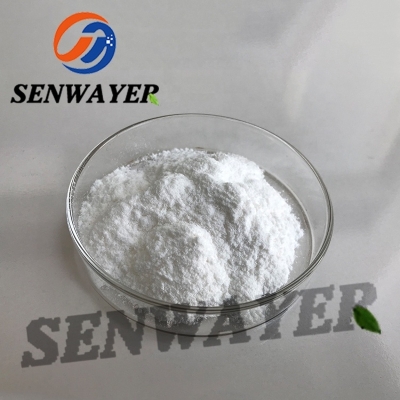-
Categories
-
Pharmaceutical Intermediates
-
Active Pharmaceutical Ingredients
-
Food Additives
- Industrial Coatings
- Agrochemicals
- Dyes and Pigments
- Surfactant
- Flavors and Fragrances
- Chemical Reagents
- Catalyst and Auxiliary
- Natural Products
- Inorganic Chemistry
-
Organic Chemistry
-
Biochemical Engineering
- Analytical Chemistry
- Cosmetic Ingredient
-
Pharmaceutical Intermediates
Promotion
ECHEMI Mall
Wholesale
Weekly Price
Exhibition
News
-
Trade Service
The U.
S.
FDA issued the draft guidelines for “Core Patient Reported Outcomes in Cancer Clinical Research” on June 9, hoping to better standardize the evaluation of patient reported outcomes (PRO) in cancer drug registration trials.
The guidelines recommend that sponsors collect five core types of PRO data
In order to maximize the utility of the submitted PRO information, the sponsor should collect and analyze the following PRO data:
Disease-related symptoms;
Symptomatic adverse events;
Overall side effects affect general measures
Body function
Task function
.
The FDA stated that it sees the potential added value of incorporating PRO measures of symptom and functional effects into benefit-risk assessments in appropriately designed trials.
These trials usually use standardized efficacy evaluations, use overall survival and tumor measurements, and clinically based Safety evaluation of adverse reactions reported by doctors
However, the guidelines point out that “the heterogeneity of PRO evaluation measures reduces the regulatory utility of PRO data from cancer trials
.
The systematic evaluation of a core set of PROs using pro-measures that fits the purpose can promote symptoms and functional impacts reported by patients.
The guidelines recognize that PROs other than the core concepts may be important to patients and can be specified and collected prospectively
.
However, the FDA stated that the results beyond the five core concepts should be carefully considered to minimize the burden on patients and improve the quality of data collected by focusing on the most meaningful results
The'minimum expectations' for patient experience data
The guidelines mark another proactive measure by the Oncology Center of Excellence (OCE) to encourage the systematic collection of patient experience data in cancer clinical trials
.
OCE has been working to determine rigorous methods for evaluating patient experience and to provide additional evidence about the effects of anticancer drugs
In 2016, Paul Kluetz, the current deputy director of OCE, and FDA colleagues published an article encouraging separate PRO evaluations of the three core concepts in cancer clinical research (symptomatic adverse events, physical function, and disease-related symptoms) instead of Use static health-related quality of life tools
.
The guidelines extend this concept, “recognizing that the core PRO set can provide the lowest expectations for patient experience data across cancer backgrounds, but may not include all important patient experience outcomes to be measured in a specific disease context
The guidelines apply to registered trials of anticancer drugs that are designed to prove the impact on survival, tumor response, or delay progression
.
In the absence of evidence of anti-tumor activity, it is not within the scope of the guidelines to just prove that the patient-reported symptoms or functional effects have clinically significant improvements
"Clearly defined" PRO measurement
The draft guide discusses the considerations for tool selection and includes examples of tools in each of the five core areas (see table below)
.
The FDA pointed out that some examples of tools were developed prior to the FDA's 2009 "Patient Report Outcome Measurement: Use in Pharmaceutical Product Development to Support Labeling Claims" guidelines and may not be suitable for solving all clinical trial issues
The guide points out that the PRO measurement measures of the core concepts should be clearly defined for clear and accurate analysis and labeling
.
"An important aspect of a well-defined PRO measurement is that the problems in the measurement should be related to the concept involved
.
For example, a well-defined physical function scale should include a series of problems that require physical activity, and should not include side effects or Symptoms and other concepts related or dependent specific problems
.
"
Test design
Several factors should be considered when determining the PRO evaluation frequency of core concepts:
Baseline evaluation, as a reference point for evaluating changes;
Perform more frequent evaluations in the first few treatment cycles, and may reduce the frequency of evaluations in subsequent cycles;
The frequency of evaluation should take into account the administration schedule of the drug under study;
You can choose a different frequency for each core concept
.
The FDA stated, “When using a modular method that can evaluate and analyze these elements separately, different evaluation frequencies can be selected to reduce the burden on patients
.
The standard method of evaluating frequency in the first year of treatment will help advanced cancer trials.
Consistency and interpretation
.
"
The guidelines include recommendations to reduce the amount of missing data and its impact on the interpretability of the results
.
Prospective procedures should be developed, including training of researchers and patients, completion of monitoring strategies, and obtaining PRO data from patients in the event of early withdrawal from the study
.
Data collection methods that reduce the burden on patients should be considered, for example, electronic PRO acquisition outside the clinic
.
The reason for the loss of PRO data should be recorded and included in the analysis data set
.
In addition, the use of concomitant medications that may affect the interpretation of the results should be carefully recorded
.
The guidelines also point out that the PRO concepts beyond the FDA's five core PRO concepts may be of interest to other stakeholders, and may include other functional areas, such as social or emotional, which are part of the overall health-related quality of life
.
Non-inferiority and superiority statement
The inclusion of PRO data in the label will depend on the adequacy of the trial design and implementation, the advantages and limitations of the PRO tool in a given use environment, and the quality of the data
.
The statement about the non-inferiority or equivalence between the two study groups of the core PRO measurement should be supported by evidence that the measurement is sufficiently sensitive and the trial design is reasonable, including a demonstration of the margin of non-inferiority selected
.
The superiority statement for the PRO endpoint must be pre-specified and tested in the trial
.
In addition, the rationale for the definition of the endpoint should be provided for FDA's review and comment before the start of the trial, including what constitutes a meaningful change
.
The exploratory PRO results that are not included in the statistical hierarchy results are considered descriptive, and will be evaluated on a case-by-case basis whether they are included in the label
.
According to the FDA, “Generally speaking, without pre-designation and statistical testing, exploratory PRO results comparing treatment benefits are unlikely to support inclusion in product labels
.
”







